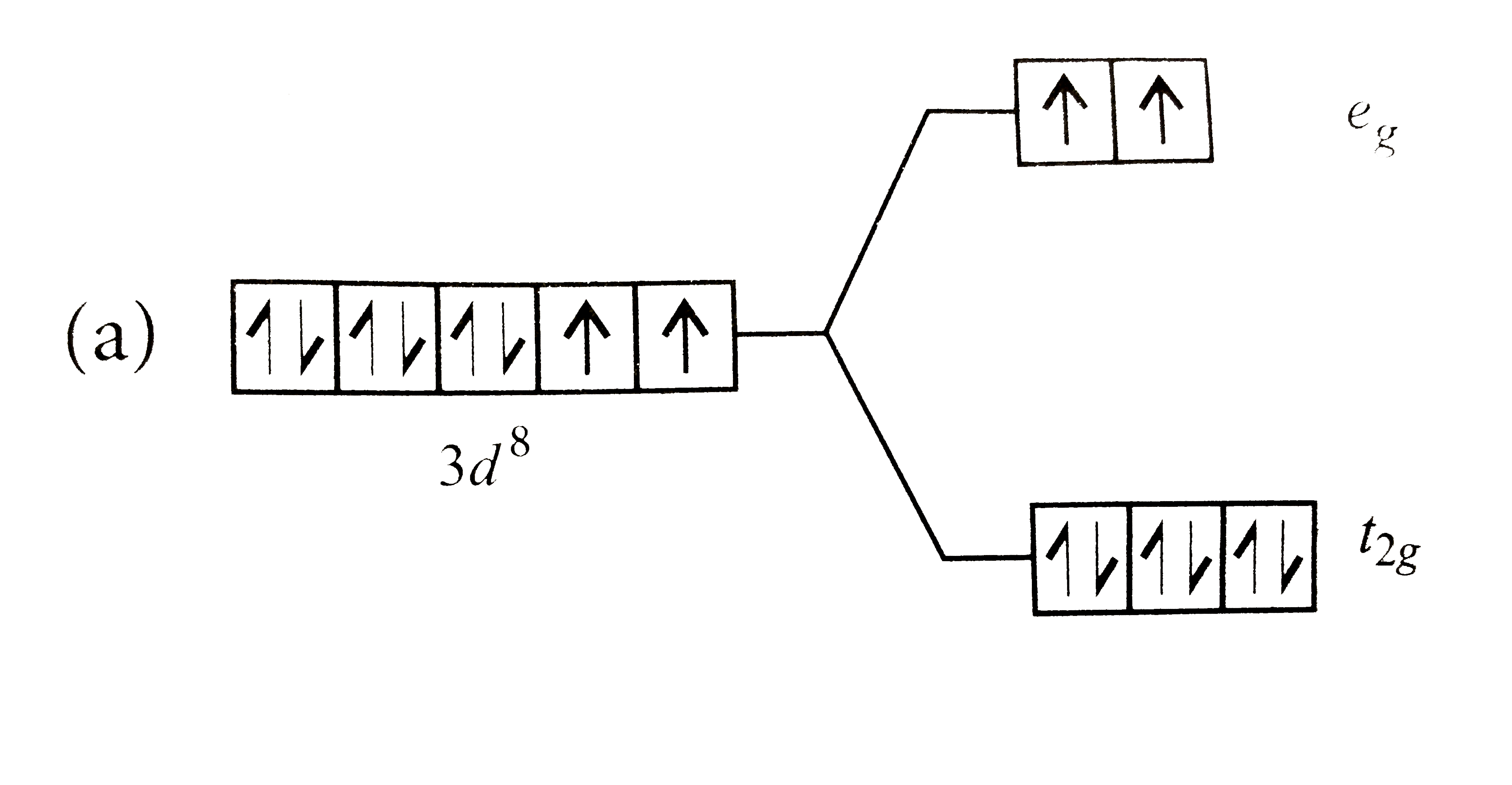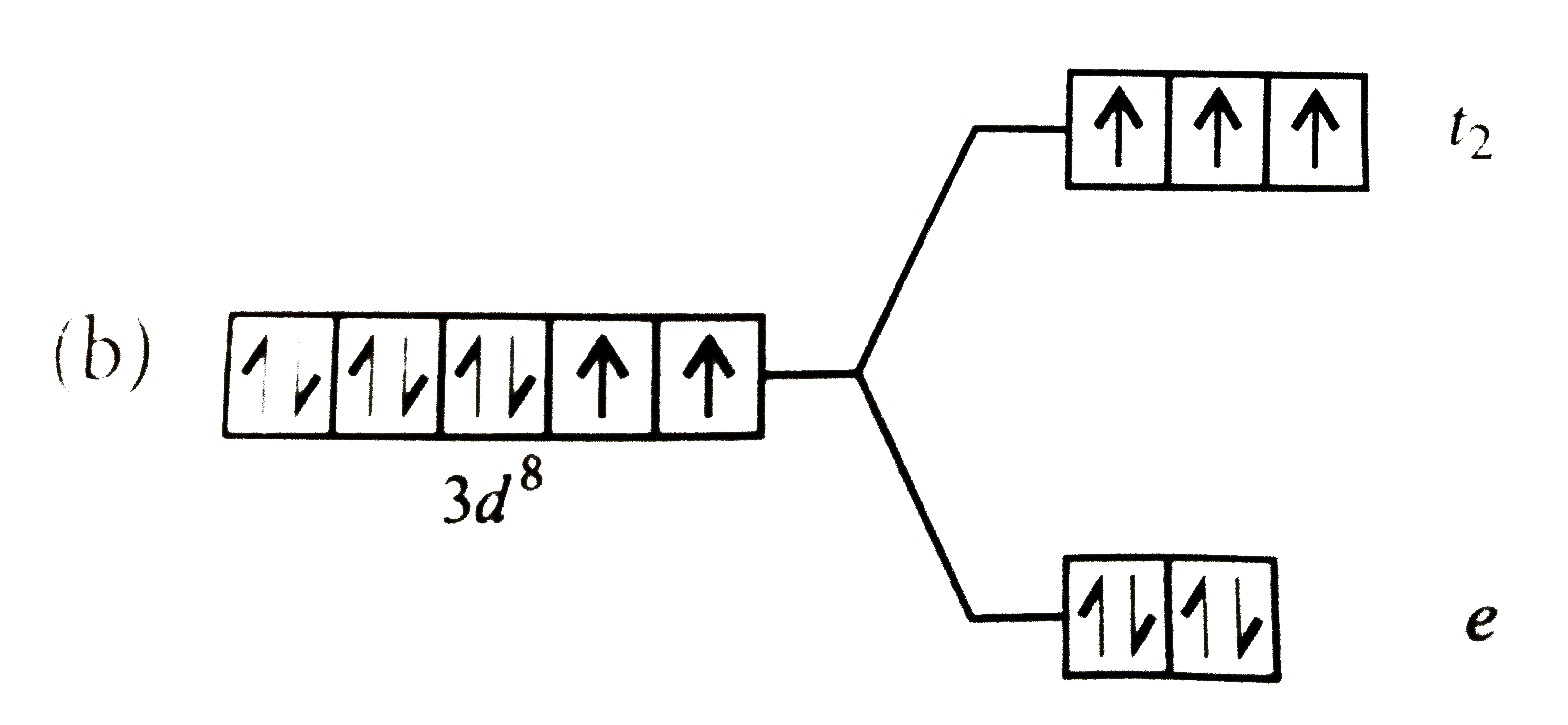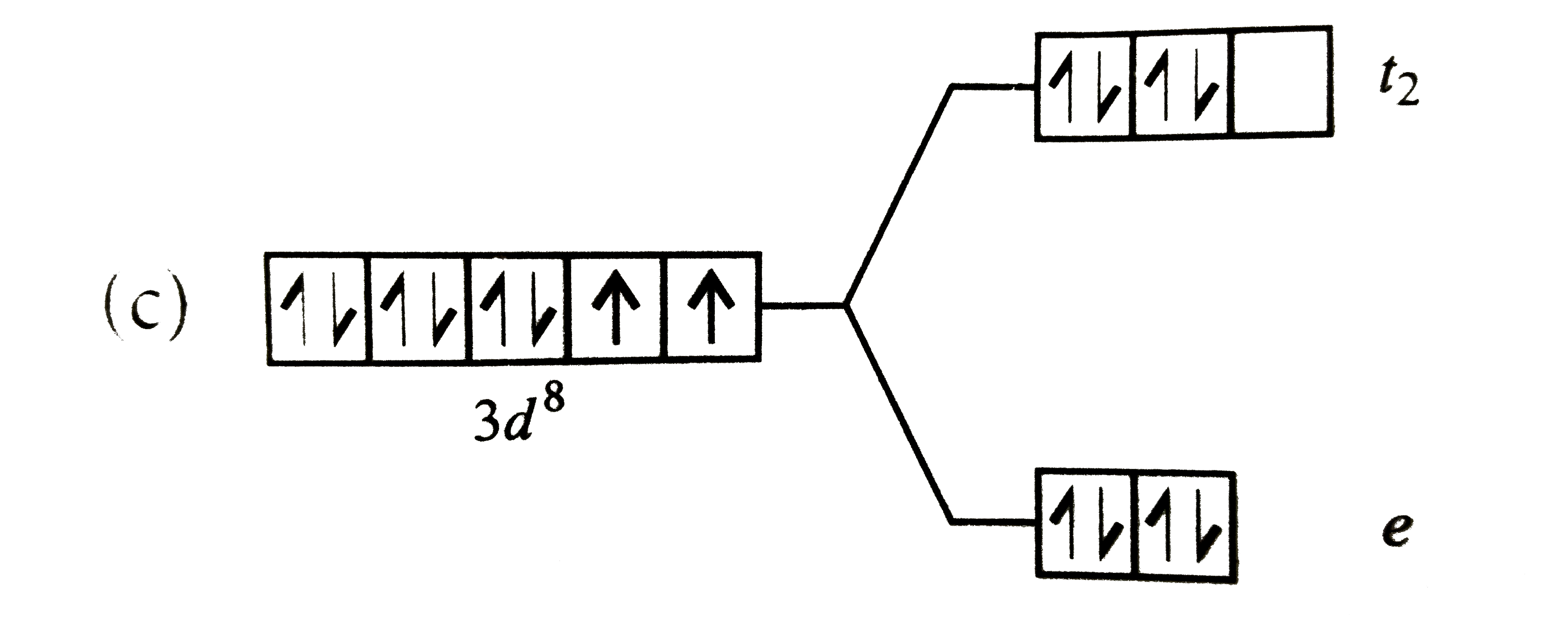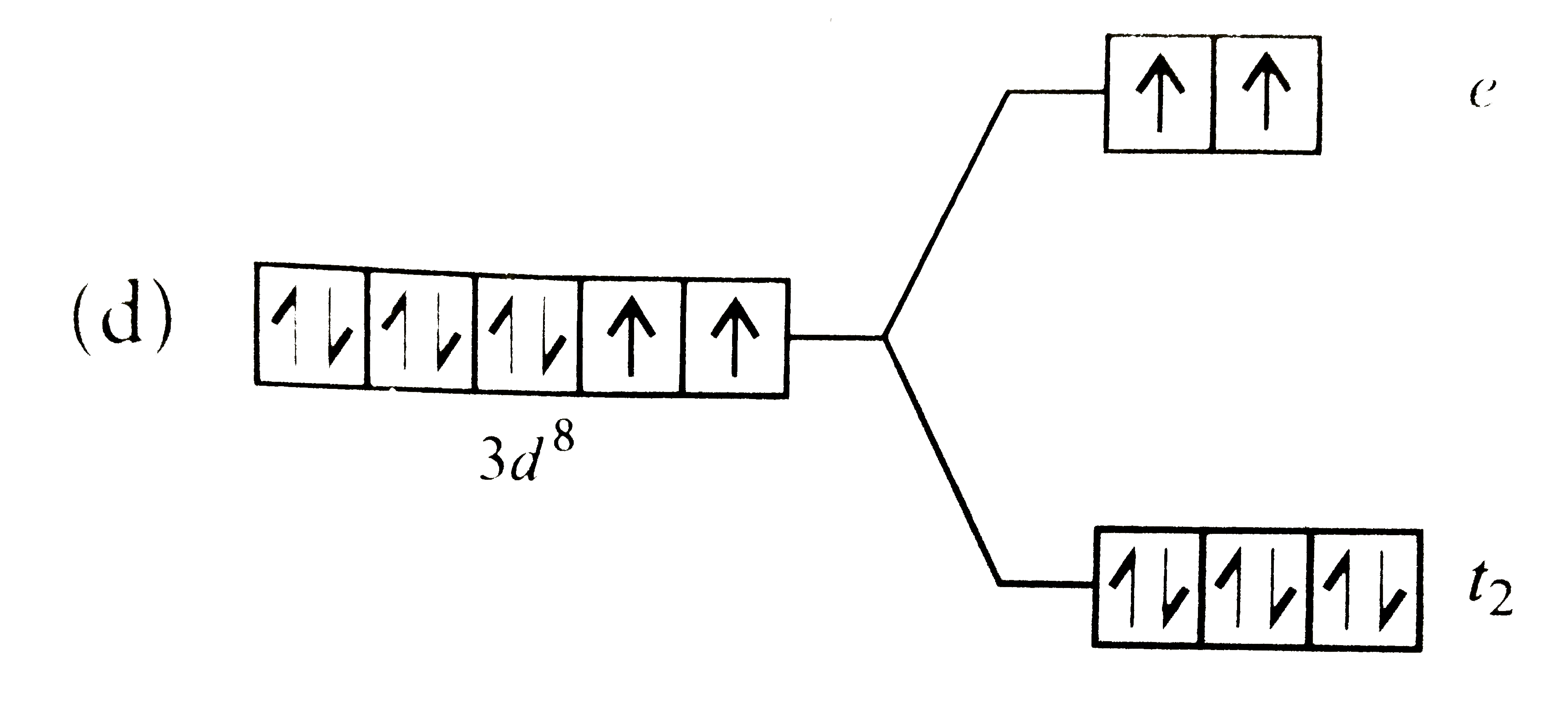In [NiCl4]2− ,the number of unparied electron is




The correct Answer is:B
To determine the number of unpaired electrons in the complex ion (NiCl4)2−, we can follow these steps:
Step 1: Determine the oxidation state of Nickel
The first step is to find the oxidation state of nickel in the complex. The formula for the complex is (NiCl4)2−.
- Let the oxidation state of nickel be X.
- The oxidation state of each chloride ion (Cl) is −1.
- Since there are 4 chloride ions, the total contribution from chloride is 4×(−1)=−4.
- The overall charge of the complex is −2.
Setting up the equation:
X+(−4)=−2
Solving for X:
X=−2+4=+2
Thus, the oxidation state of nickel in (NiCl4)2− is +2.
Step 2: Write the electron configuration of Nickel
The atomic number of nickel (Ni) is 28. The electron configuration of neutral nickel is:
(Ar)3d84s2
For the nickel ion Ni2+, we remove two electrons (the 4s electrons are removed first):
Ni2+:(Ar)3d8
Step 3: Analyze the ligand field
Chloride ion (Cl−) is a weak field ligand. Weak field ligands do not cause significant splitting of the d-orbitals, which means that the energy difference between the split d-orbitals is small.
Step 4: Splitting of d-orbitals
In an octahedral field, the 3d orbitals split into two sets:
- t2g (lower energy)
- eg (higher energy)
However, since we have a tetrahedral complex here, the splitting is different:
- The 3d orbitals split into e (higher energy) and t2 (lower energy).
Step 5: Filling the d-orbitals
For Ni2+ with 3d8:
- The electrons will fill the orbitals according to Hund's rule and the Pauli exclusion principle.
- In a weak field, the electrons will occupy the higher energy e orbitals before pairing occurs in the lower energy t2 orbitals.
Filling the 3d orbitals:
- The first 6 electrons will fill the t2 orbitals (3 electrons in t2 and 5 in e).
- The last 2 electrons will pair up in the t2 orbitals.
Step 6: Count the unpaired electrons
After filling the orbitals:
- The t2 orbitals will have 2 paired electrons.
- The e orbitals will have 2 unpaired electrons.
Thus, the total number of unpaired electrons in (NiCl4)2− is 2.
Final Answer
The number of unpaired electrons in (NiCl4)2− is 2.
---
The first step is to find the oxidation state of nickel in the complex. The formula for the complex is (NiCl4)2−.
- The oxidation state of each chloride ion (Cl) is −1.
- Since there are 4 chloride ions, the total contribution from chloride is 4×(−1)=−4.
- The overall charge of the complex is −2.
X+(−4)=−2
Solving for X:
X=−2+4=+2
Thus, the oxidation state of nickel in (NiCl4)2− is +2.
The atomic number of nickel (Ni) is 28. The electron configuration of neutral nickel is:
(Ar)3d84s2
For the nickel ion Ni2+, we remove two electrons (the 4s electrons are removed first):
Ni2+:(Ar)3d8
Chloride ion (Cl−) is a weak field ligand. Weak field ligands do not cause significant splitting of the d-orbitals, which means that the energy difference between the split d-orbitals is small.
In an octahedral field, the 3d orbitals split into two sets:
- t2g (lower energy)
- eg (higher energy)
- The 3d orbitals split into e (higher energy) and t2 (lower energy).
For Ni2+ with 3d8:
- The electrons will fill the orbitals according to Hund's rule and the Pauli exclusion principle.
- In a weak field, the electrons will occupy the higher energy e orbitals before pairing occurs in the lower energy t2 orbitals.
- The first 6 electrons will fill the t2 orbitals (3 electrons in t2 and 5 in e).
- The last 2 electrons will pair up in the t2 orbitals.
After filling the orbitals:
- The t2 orbitals will have 2 paired electrons.
- The e orbitals will have 2 unpaired electrons.
The number of unpaired electrons in (NiCl4)2− is 2.
Topper's Solved these Questions
- BOOK - NCERT FINGERTPS ENGLISHCHAPTER - COORDINATION COMPOUNDS EXERCISE - HOTS8videos
COORDINATION COMPOUNDS
- BOOK - NCERT FINGERTPS ENGLISHCHAPTER - COORDINATION COMPOUNDS EXERCISE - NCERT EXEMPLAR PROBLEMS14videos
COORDINATION COMPOUNDS
- BOOK - NCERT FINGERTPS ENGLISHCHAPTER - CHEMISTRY IN EVERYDAY LIFE EXERCISE - NCERT Exemplar15videos
CHEMISTRY IN EVERYDAY LIFE
- BOOK - NCERT FINGERTPS ENGLISHCHAPTER - ELECTROCHEMISTRYEXERCISE - Assertion And Reason15videos
ELECTROCHEMISTRY
Similar Questions
The number of unpaired electron in Cr+2 is
View SolutionThe number of unpaired electron in Ni2+ is
View SolutionIn the conplex[Ni(H2O)2(NH3)4]2+ the number of unpaired electrons is
View SolutionThe number of unpaired electrons in Zn2+ is
View SolutionNumber of unpaired electrons in Mn2+ is
View SolutionThe number of unpaired electrons in Ni(CO)4 is
View SolutionThe number of unpaired electrons in Ni(CO)4 is
View SolutionThe electronic configuration of Re3+ is (Xe)4f145d4, the number of unpaired electrons in this ion is ____________.
View SolutionNumber of valence electrons in O2− is :
View SolutionWrite the electronic configuration of (i) Mn4+, (ii) Fe3+ (iii) Cr2+ Mention the number of unpaired electrons in each case.
View Solution

